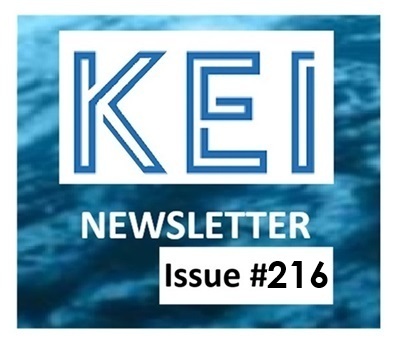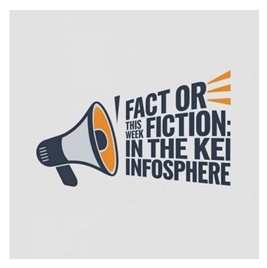|
Can Canada Save Itself? |
DIRECTORY | ||
|
Contributions: Who Is Subsidizing Canada's Economy? |
Action: Help sustain KEI's contributions |
Fact or Fiction?
Peak Oil Has Arrived |
|
|
Editor - Perry Kinkaide |
"Can Canada be saved?" is a fitting finale for our series of newsletters and webinars exploring the threats without and within to Canada's sovereignty. Whether our new Prime Minister is up to the task is soon to be revealed. Can he get help and support for various compromises to fix what ails the country. Will the Provinces relent? Or will the entrenched special interests prevail in Quebec, Ontario, and now Alberta? Stay tuned - this summer may be sweltering. Each May the KEI Network with the help of S2S - Greg MacGillivray, arrange a get-together in Calgary as an alternative to KEI's weekly webinar. If you are in the vicinity join us: Thursday May 22nd at 4:00pm MT in the Palomino Room of Milestones Restaurant in Calgary on Stephen's Avenue. - Editor |
||
Can Canada Save Itself?Canada is fraying — economically, socially, and politically. What was once considered one of the world’s most stable democracies is now contending with economic stagnation, regional divisions, rising crime, and institutional fatigue. These are not isolated issues. They are interconnected symptoms of a country struggling to adapt to a changed world. And while the collapse is not imminent, the erosion is undeniable. The time for polite denial has passed. The question is urgent: Can Canada save itself? Economic Stagnation: A Crisis Ignored. Over the past decade, Canada's economy has been alarmingly underperforming. According to the OECD and IMF: • GDP per capita in Canada grew by only 2.3% between 2015 and 2023 — compared to 8.5% in the U.S. • Labour productivity has declined for 6 straight quarters, a sign of systemic inefficiency. • Business investment per worker is 50% lower than in the U.S. Canada’s vaunted social programs — healthcare, education, transit — are funded by an economy that is barely growing. The post-pandemic recovery has been lopsided and largely dependent on consumer debt and immigration-fueled population growth, rather than innovation or capital formation. Internal Barriers: Canada’s Self-Imposed Trade War. One of the most self-destructive economic features of Canada is the continued existence of interprovincial trade barriers. A 2016 Senate report estimated the annual cost of these restrictions at up to $130 billion — the equivalent of over $3,000 per Canadian per year. Examples include: • Inconsistent building codes and licensing standards • Restrictions on alcohol sales across provinces • Protectionist barriers to the movement of trucking, labour, and services. Despite signing the Canadian Free Trade Agreement in 2017, enforcement mechanisms are weak, and provinces regularly opt out or delay compliance. Economists across the political spectrum agree: no country can thrive when it taxes goods coming from itself. Supply Management: A System Built to Resist Change. Canada’s supply-managed agriculture sector — covering dairy, eggs, and poultry — keeps prices high for consumers and shuts out international competition. Under this regime: • Canadian consumers pay up to 60% more for dairy than their U.S. counterparts. • Trade deals like CETA and the USMCA were nearly derailed over Canada’s refusal to reform the system. • Young farmers face nearly insurmountable barriers to entry, as quota costs exceed $2 million for a modest-sized dairy operation. While politically protected by powerful lobbies in Quebec and Ontario, supply management stifles innovation, penalizes trade partners, and widens the gap between rural and urban economic realities. Regional Discord: A Nation Pulling Apart. The economy is not just sluggish — it’s fractured: • Alberta and Saskatchewan send billions to Ottawa in equalization, yet face pipeline bans and carbon taxes that restrict their core industry. • Quebec, while receiving Canada’s social fabric — built on tolerance and multiculturalism — is wearing thin under the pressures of economic insecurity, ideological extremism, and digital misinformation. • Federal government blocking energy infrastructure essential for pan-Canadian development. • Atlantic provinces remain highly dependent on federal transfers, reinforcing a culture of dependence rather than competitiveness. This isn’t just about dollars — it’s about legitimacy. Western alienation is not an attitude problem. It’s a policy consequence. Continued below -
Continued from above - Crime and Disorder: Urban Canada in Crisis. Major cities — Vancouver, Edmonton, Toronto — are grappling with rising violence and social disarray:• Violent crime increased 5% nationally in 2023, according to Statistics Canada. • Car thefts are up over 24% in urban corridors, driven by organized crime. • Fatal overdoses are the leading cause of death for British Columbians aged 10–59. • Mental health calls to police now outnumber property crime calls in many regions. Municipalities are overwhelmed. Police forces are understaffed. Crown prosecutors are dropping cases for lack of court time. And all levels of government continue to treat the symptoms instead of the cause. Hate and Polarization on the Rise. Canada’s social fabric — built on tolerance and multiculturalism — is wearing thin under the pressures of economic insecurity, ideological extremism, and digital misinformation. • Antisemitic incidents hit a record high in 2023, according to B’nai Brith. • Islamophobic attacks — including mosque arsons and street violence — continue to rise. Anti-Asian hate crimes spiked during the pandemic and have not returned to pre-2020 levels. • Trust in national institutions — including media, Parliament, and the courts — is falling steadily, as revealed in the Edelman Trust Barometer. What Must Be Done.Canada can save itself — but not with the current pace of incrementalism. What’s needed is a policy shock, driven by visionary leadership and national resolve. That includes: 1. Eliminating interprovincial trade barriers through binding federal legislation and constitutional reform if necessary 2. Phasing out supply management with transitional compensation to farmers and a reorientation to global competitiveness 3. Accelerating energy infrastructure development, including pipelines, LNG terminals, and clean power grids — with federal arbitration of provincial blockades 4. Reforming criminal justice to balance compassion with enforcement, including expanded mental health courts and mandatory treatment for chronic offenders 5. Rebuilding institutional trust with transparency, independent oversight, and a national recommitment to free speech, pluralism, and democratic norms The Clock Is Ticking.Canada is not a failed state — but it is a stalled one. Economic sclerosis, criminal impunity, regional resentment, and leadership gridlock have created a slow-motion crisis. The good news? Canada still has the means — human, institutional, and natural — to course-correct. But only if it’s leaders act now, boldly and unapologetically. Canada can save itself. But first, it must stop pretending it doesn’t need saving. Editor@KEInetwork.net |




